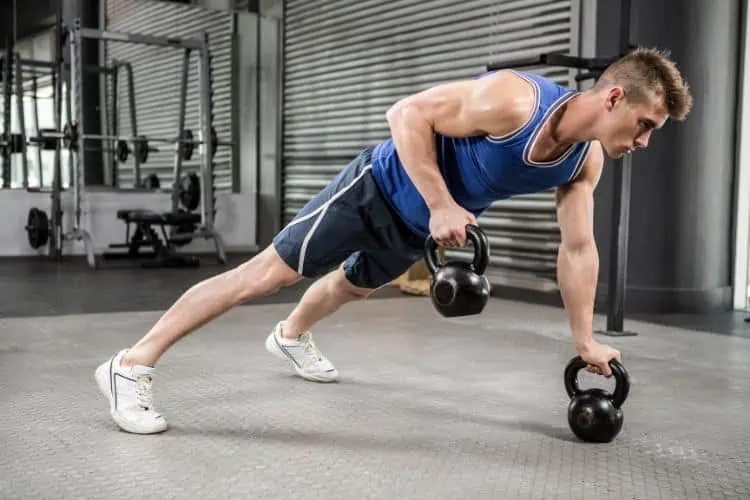
When it comes to burning fat and shedding pounds effectively, High-Intensity Interval Training (HIIT) stands out as one of the most efficient workout strategies. Whether you’re just starting your fitness journey or looking to break through a plateau, HIIT offers a fast-paced, fat-blasting solution that maximizes results in minimal time. In this comprehensive guide, we’ll explore how HIIT works, its weight loss benefits, sample workouts, and tips for getting the most out of your training sessions.
HIIT Workouts for Weight Loss The Ultimate Guide to Burning Fat Fast
HIIT, or High-Intensity Interval Training, is a workout method that alternates short bursts of intense activity with periods of lower-intensity recovery or rest. A typical HIIT session can range from 10 to 45 minutes, depending on your fitness level and goals. The idea is to push your body to work hard during the intense intervals, which increases your heart rate and metabolism, then allow it to recover before repeating the cycle.
How HIIT Differs from Traditional Cardio
Unlike steady-state cardio, like jogging or cycling at a constant pace, HIIT demands near-maximal effort during work intervals. This not only burns more calories in a shorter time but also leads to greater fat oxidation and afterburn effect—also known as excess post-exercise oxygen consumption (EPOC), where your body continues to burn calories long after the workout is over.
Why HIIT Workout Is Effective for Weight Loss
1. Burns Calories Quickly
One of the main reasons people turn to HIIT for weight loss is its time efficiency. Studies have shown that HIIT can burn 25–30% more calories than other forms of exercise in the same amount of time. A 20-minute session can torch as many calories as a 45-minute moderate-intensity workout.
2. Boosts Metabolic Rate
HIIT significantly increases your metabolic rate for hours after you finish exercising. This means you’ll continue to burn fat while at rest, making it an excellent strategy for long-term fat loss.
3. Preserves Lean Muscle Mass
Traditional cardio can sometimes lead to muscle loss, especially when combined with a calorie deficit. HIIT, however, is anaerobic in nature and helps preserve lean muscle tissue, which is crucial for a toned appearance and long-term metabolism health.
4. Reduces Belly Fat
Numerous studies confirm that HIIT is particularly effective at targeting visceral fat, the harmful fat that surrounds internal organs and contributes to serious health issues like heart disease, diabetes, and obesity.
Sample HIIT Workouts for Weight Loss
Whether you’re a beginner or an advanced athlete, there are countless HIIT routines you can follow. Here are some highly effective workouts tailored for different levels:
Beginner HIIT Workout (No Equipment Needed)
Total Time: 20 minutes
Workout Structure
- 30 seconds work / 30 seconds rest
- Repeat each round 2–3 times
Exercises
- Jumping Jacks
- High Knees
- Bodyweight Squats
- Mountain Climbers
- Plank Hold
This simple routine increases heart rate, burns calories, and improves cardiovascular endurance without overwhelming beginners.
Intermediate HIIT Workout (Bodyweight Only)
Total Time: 25–30 minutes
Workout Structure
- 40 seconds work / 20 seconds rest
- Repeat each round 3 times
Exercises
- Jump Squats
- Push-Ups
- Burpees
- Reverse Lunges
- Plank to Shoulder Tap
This routine incorporates both upper and lower body strength with cardio bursts to increase fat burn.
Advanced HIIT Workout (With Dumbbells or Kettlebells)
Total Time: 30–40 minutes
Workout Structure
- 45 seconds work / 15 seconds rest
- Repeat each round 3–4 times
Exercises
- Dumbbell Thrusters
- Kettlebell Swings
- Jump Lunges
- Push-Up to Renegade Row
- Russian Twists
This workout targets full-body strength and high-intensity cardio, ideal for experienced trainees looking to accelerate fat loss.
Weekly HIIT Workout Plan for Weight Loss
To achieve the best results, consistency is key. Here’s a sample 7-day HIIT workout plan to jumpstart your weight loss journey:
| Day | Workout Focus |
|---|---|
| Monday | Lower Body HIIT (e.g., squats, lunges, jump squats) |
| Tuesday | Core & Cardio HIIT |
| Wednesday | Rest or light yoga/stretching |
| Thursday | Full Body Dumbbell HIIT |
| Friday | Upper Body & Core HIIT |
| Saturday | Cardio HIIT Challenge (burpees, sprints, high knees) |
| Sunday | Rest or active recovery walk |
Incorporating rest days or lighter activities helps prevent burnout and reduces the risk of injury.
How Many Times a Week Should You Do HIIT?
Most experts recommend performing HIIT 2 to 4 times per week for weight loss. More is not always better—doing HIIT every day can lead to overtraining, fatigue, and muscle loss. It’s essential to give your muscles time to recover so they can grow stronger and continue burning fat efficiently.
Tips to Maximize Weight Loss with HIIT
1. Pair HIIT with a Healthy Diet
No matter how intense your workouts are, you can’t out-train a bad diet. Focus on whole foods, lean proteins, healthy fats, complex carbs, and stay hydrated. Eating in a slight calorie deficit while maintaining nutrient balance will accelerate fat loss.
2. Prioritize Sleep and Recovery
Sleep is vital for weight loss and muscle repair. Aim for 7–9 hours of quality sleep each night. Incorporate mobility work, foam rolling, or stretching post-workout to reduce soreness and promote recovery.
3. Progressively Increase Intensity
To continue seeing results, increase the intensity or complexity of your HIIT workouts over time. Add resistance (like dumbbells), reduce rest intervals, or increase rounds.
4. Stay Consistent
Consistency outweighs perfection. Even short 15–20 minute HIIT sessions done 3–4 times per week can lead to major improvements in fat loss, stamina, and body composition.
Common Mistakes to Avoid with HIIT Workouts For Weight Loss
1. Overtraining
Too many high-intensity sessions with insufficient rest can result in burnout, injuries, and hormonal imbalance. Listen to your body and build rest into your schedule.
2. Poor Form
When rushing through HIIT exercises, it’s easy to sacrifice form, especially when tired. This increases injury risk. Focus on quality over quantity, and slow down if necessary.
3. Ignoring Warm-Up and Cool-Down
Always start with a dynamic warm-up to prepare your muscles and end with stretching to promote recovery. Skipping these steps can lead to stiffness, tightness, and poor performance.
Equipment to Enhance Your HIIT Workouts For Weight Loss
You don’t need much equipment for HIIT, but a few tools can take your sessions to the next level:
- Jump Rope: Great for warming up or adding cardio bursts
- Resistance Bands: Adds difficulty to bodyweight movements
- Kettlebells/Dumbbells: Essential for strength-based HIIT
- Timer App: Helps manage intervals easily
- Yoga Mat: Comfort for floor-based movements
Benefits of HIIT Workout Beyond Weight Loss
While HIIT is popular for burning fat, it comes with a host of additional benefits:
- Improved cardiovascular health
- Increased insulin sensitivity
- Enhanced endurance and stamina
- Greater energy and mood levels
- Time-efficient for people with busy schedules
Plus, the mental discipline developed through HIIT often carries over into other areas of life, building a strong and resilient mindset.
Is HIIT workout for weight loss Right for You?
HIIT workouts are one of the most effective, research-backed methods for losing weight, preserving muscle, and boosting metabolism. Whether you’re short on time or simply looking for a challenge, incorporating HIIT into your weekly routine can transform your body and health.
However, HIIT isn’t a one-size-fits-all solution. If you’re new to exercise, start slow and focus on building foundational strength and endurance before progressing. And always consult a healthcare professional before starting any new fitness program, especially if you have pre-existing conditions.
Frequently Asked Questions (FAQs)
How long should a HIIT workout be for weight loss?
A typical HIIT session should be between 15–30 minutes. That’s enough time to elevate your heart rate and create an afterburn effect without overtraining.
Can beginners do HIIT workouts?
Absolutely! Beginners can start with low-impact HIIT routines using bodyweight exercises and gradually build intensity as their fitness improves.
Is HIIT better than cardio for fat loss?
HIIT often outperforms steady-state cardio in terms of calorie burn, fat loss, and time efficiency, making it a superior option for many people looking to lose weight fast.
How soon can I expect to see results from HIIT?
Results vary, but with 3–4 HIIT sessions per week and a clean diet, most people start seeing noticeable changes in 2–4 weeks.
Ready to Burn Fat with HIIT?
If you’re committed to your weight loss journey, HIIT workouts are your secret weapon. Efficient, powerful, and adaptable, they’re ideal for anyone looking to burn fat and build endurance fast. Lace up your shoes, set your timer, and let the transformation begin!

